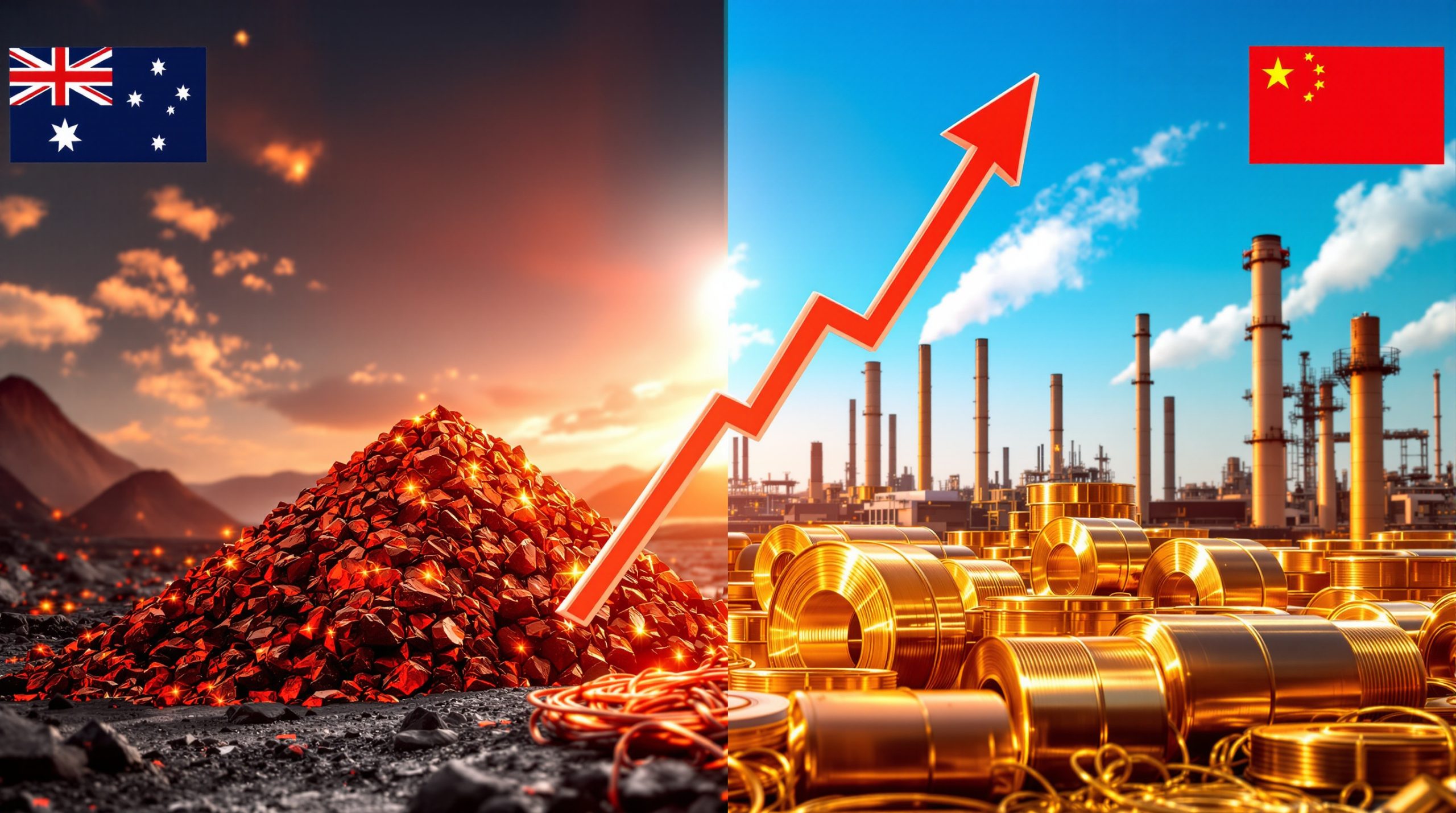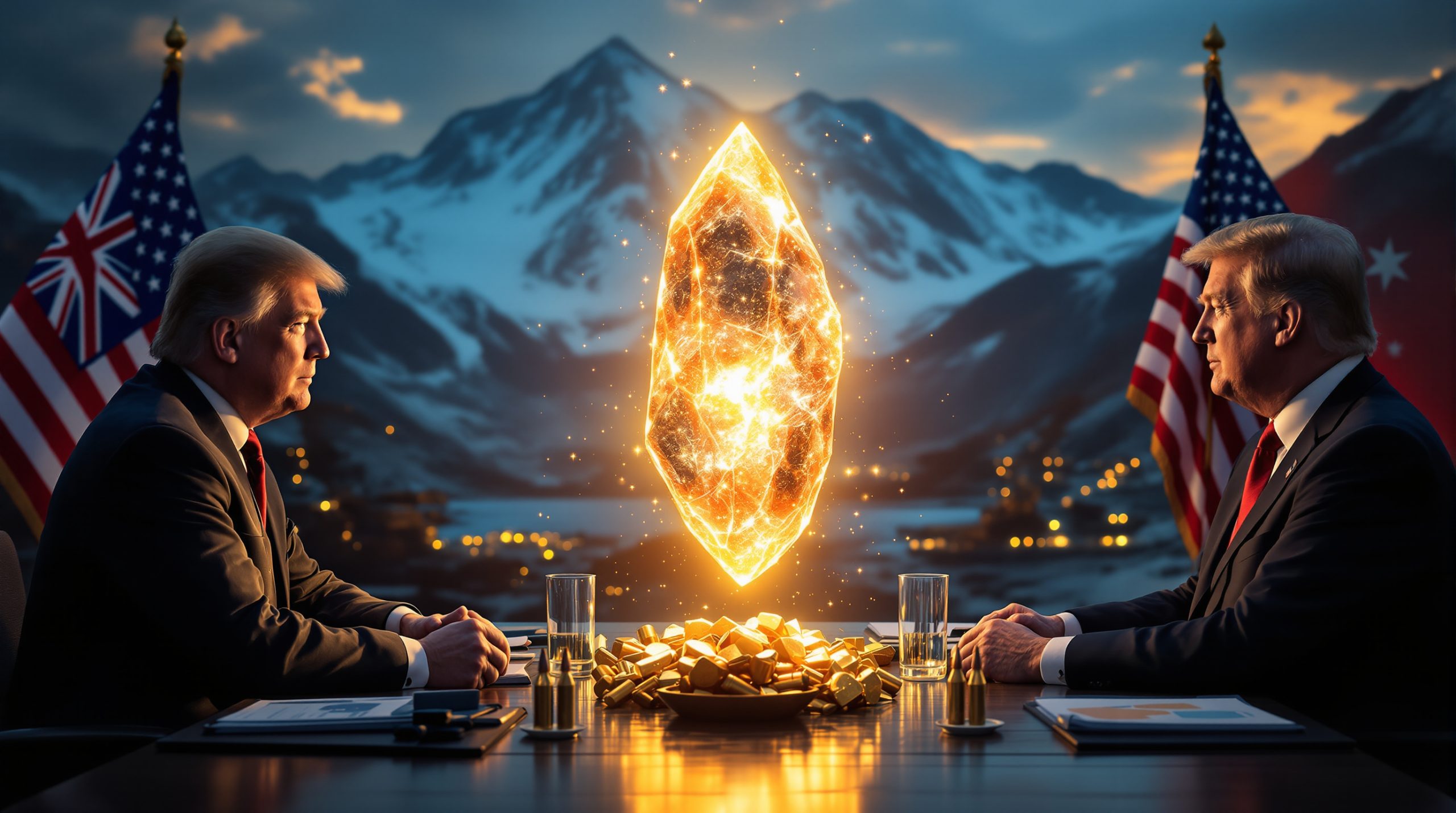Australia's Strategic Critical Minerals Reserve: Securing Future Supply Chains
Australia is establishing a A$1.2 billion (US$782 million) Critical Minerals Strategic Reserve to safeguard supply chains for essential industrial and defense materials. This landmark initiative represents a significant shift in Australia's national resource security strategy, moving away from traditional physical stockpiling toward a more flexible financial instrument approach based on future production agreements.
The Critical Minerals Task Force has been conducting industry consultations with miners and developers across rare earths, lithium, and other critical metals as it finalizes policy recommendations. With implementation targeted for the second half of 2026, this initiative aims to position Australia as a critical minerals powerhouse in an increasingly uncertain global market.
Key Components of the Strategic Reserve
The reserve's framework includes several innovative elements that differentiate it from traditional commodity reserves:
- Budget allocation of A$1.2 billion (US$782 million) committed to securing critical mineral supply chains
- Implementation timeline targeting operational launch in the second half of 2026
- Focus on contractual supply frameworks rather than physical storage facilities
- Potential for shared ownership with allied nations including the US, Japan, South Korea, and UK
- Emphasis on minerals essential for energy transition security, defense applications, and advanced manufacturing
As Trade Minister Don Farrell noted, "We've got vast resources of the critical minerals the world needs to decarbonise, to build data centres, and to process AI. We need a broad range of customers to provide the capital to extract these resources and guaranteed markets to sell them."
Why is Australia Creating a Critical Minerals Reserve Now?
Rising Global Trade Tensions
The initiative comes amid escalating international trade tensions insights between major powers, particularly with China implementing tighter export controls on critical materials. Recent Chinese customs data shows rare earth exports fell 31% in September 2025 from August 2025, reaching approximately 4,000 tonnes—their lowest levels since February 2025.
This marks the third consecutive monthly decline in Chinese rare earth exports, highlighting growing policy uncertainty in the critical minerals sector. Despite these recent drops, Chinese rare earth exports remain up 13% for 2025 compared to 2024, showing the volatile nature of the market.
China's new controls expand licensing requirements for key magnet and alloy materials, creating additional uncertainty for global supply chains dependent on these resources.
Strategic Independence in a Volatile Market
Australia's abundant mineral resources position it uniquely to:
- Reduce dependency on geographically concentrated supply chains dominated by a single nation
- Buffer against market volatility and potential price manipulation attempts
- Ensure continued access to materials essential for defense systems and advanced manufacturing
- Support domestic processing capabilities and value-adding opportunities within Australia
- Create jobs and economic growth in regional mining communities
The strategic reserve represents a proactive approach to securing Australia's economic and national security interests in a world increasingly defined by resource competition.
Geopolitical Alignment with Key Allies
The reserve represents a coordinated approach to resource security, with potential participation from:
- United States, with discussions scheduled during PM Albanese's meeting with President Trump on October 20, 2025
- Japan, which has been actively seeking diversified rare earth sources
- South Korea, a major consumer of critical minerals for its technology manufacturing
- United Kingdom, as part of broader strategic resource cooperation
This multilateral framework allows for shared risk, enhanced market influence, and coordinated responses to supply disruptions. The timing of Australia's initiative aligns with growing concerns across Western nations about critical mineral supply chain resilience.
How Will the Critical Minerals Reserve Actually Work?
Forward Contracts vs. Physical Stockpiling
Unlike traditional strategic reserves that physically warehouse materials at significant cost, Australia's approach will focus on:
- Pre-selling future mineral production through binding contracts
- Creating guaranteed supply agreements with allied governments
- Establishing direct delivery channels from miners to end consumers
- Reducing warehousing costs, quality control issues, and logistical challenges
"It's more like a financial instrument than a physical stockpile," explained an industry source familiar with the consultations. This approach allows participating miners to secure funding for project development while providing governments with supply guarantees without the overhead of maintaining physical inventories.
Financial Structure and Risk Management
The reserve will incorporate sophisticated mechanisms to:
- Manage pricing risks in smaller or less liquid markets like heavy rare earths
- Provide capital relief for developing projects, particularly those with high initial costs
- Establish annual supply quotas for future years, creating predictable demand
- Create pricing benchmarks independent of Chinese market influence
This financial framework represents a significant innovation in strategic resource management. By focusing on future production rather than current stockpiles, Australia can leverage its vast resources more effectively while providing certainty to both producers and consumers.
What Minerals Will Be Included in the Strategic Reserve?
Priority Critical Minerals
While the final list remains under development, the initiative will likely focus on minerals essential for:
-
Energy Transition Technologies
- Lithium for battery production and energy storage systems
- Cobalt for high-performance battery cathodes
- Rare earth elements for permanent magnets in wind turbines and electric vehicles
- Nickel for advanced battery cathodes and energy storage applications
-
Defense Applications
- Heavy rare earths for precision guidance systems and specialized optics
- Titanium for aerospace components and naval applications
- Gallium for radar systems and electronic warfare capabilities
- Graphite for thermal management in defense electronics
-
Advanced Manufacturing
- Vanadium for high-strength steel alloys and energy storage
- Manganese for steel production and battery technologies
- Tungsten for industrial tools and specialized manufacturing
- Scandium for aerospace alloys and solid oxide fuel cells
The reserve will prioritize materials identified in Australia's Critical Minerals Strategy 2023-2030 as strategically important for both economic and security reasons.
Focus on Supply Chain Vulnerabilities
Special attention will be given to minerals where:
- Market liquidity is limited, making pricing opaque and volatile
- Production is geographically concentrated in potentially hostile nations
- Processing capabilities are dominated by few countries, creating bottlenecks
- Substitution options are limited or nonexistent for critical applications
Heavy rare earths represent a particular area of concern, as benchmarks are "still largely dictated by China" according to industry sources. These elements are crucial for defense systems and renewable energy technologies but face significant supply chain risks.
What Market Impact Will the Reserve Create?
Potential Benefits for Australian Miners
The strategic reserve could provide significant advantages to domestic producers:
- More stable financing environment through government-backed purchase agreements
- Guaranteed offtake agreements reducing investment risk
- Reduced capital constraints for project development and expansion
- Potential price floors in volatile markets, particularly for emerging producers
For junior mining companies with promising resources but limited access to capital, the reserve could provide the financial certainty needed to advance projects from exploration to production.
International Market Stabilization
The initiative may help normalize global critical minerals markets by:
- Creating alternative pricing benchmarks independent of Chinese influence
- Reducing dependency on Chinese export quotas and licensing requirements
- Establishing more transparent supply chains with predictable volumes
- Supporting emerging producers outside dominant market participants
By introducing a significant non-Chinese buyer into these markets, the reserve could reduce price volatility and encourage investment in new production capacity globally.
Stock Market Reaction
Recent market movements suggest positive investor sentiment toward critical minerals diversification. US rare earth and critical mineral stocks showed significant gains following initial reports of Australia's initiative:
| Company | Recent Performance |
|---|---|
| USAR | +17% gain |
| CRML | +16% gain |
| AREC | +11% gain |
As one market analyst noted, "The rally reflects growing investor belief that Western governments are moving toward direct intervention and co-investment models to stabilize supply and support domestic production."
ASX-listed critical minerals companies may see similar positive sentiment as details of the Australian reserve program become clearer.
How Does This Compare to Other Nations' Approaches?
United States Strategic Reserve Models
The US has implemented several approaches to critical minerals security:
- Defense Production Act funding for domestic critical minerals production
- Inflation Reduction Act provisions with domestic content requirements
- National Defense Stockpile managed by the Defense Logistics Agency for strategic materials
- Public-private partnerships to develop processing capabilities
Australia's approach differs primarily in its emphasis on forward contracts rather than physical stockpiling, potentially creating a more capital-efficient model.
European Critical Raw Materials Act
The European Union has developed its own framework for resource security:
- Strategic projects designation for expedited permitting and financing
- Streamlined permitting processes for critical minerals developments
- Supply diversification targets mandating no more than 65% from any single source
- Recycling initiatives to reduce primary material dependency
While Europe lacks Australia's natural resource advantage, its regulatory approach through the European supply facility offers complementary strategies for supply chain resilience.
Japanese and Korean Strategic Reserves
Australia's initiative shares elements with established Asian approaches:
- Government-industry partnership models for resource security
- Long-term offtake agreements with international suppliers
- Investment in overseas mining projects to secure supply
- Focus on materials critical for high-tech manufacturing industries
These Asian models have demonstrated success in reducing vulnerability to supply disruptions, providing useful precedents for Australia's program.
What Challenges Could the Reserve Face?
Implementation Hurdles
Despite its promising concept, the reserve will need to overcome significant challenges:
- Determining appropriate pricing mechanisms for illiquid markets like heavy rare earths
- Balancing commercial interests with strategic objectives in contract structures
- Managing potential storage and quality control issues for any physical components
- Coordinating with international partners with varying priorities and timelines
The task of creating standardized contracts for diverse mineral types with different market characteristics presents particular complexity.
Market Distortion Risks
Government intervention in markets always carries potential unintended consequences:
- Potential to artificially inflate prices through government purchasing
- Risk of creating dependency on subsidized production that isn't commercially viable
- Possible trade retaliation from excluded nations viewing the reserve as protectionist
- Challenges in maintaining competitive market dynamics while pursuing strategic goals
Careful program design will be essential to minimize these risks while achieving supply security objectives.
Technical and Operational Considerations
Practical implementation challenges include:
- Quality standardization across different producers and processing methods
- Verification of production capabilities and realistic delivery timelines
- Management of contract defaults or force majeure events
- Balancing transparency with commercial confidentiality requirements
The unique characteristics of each mineral commodity will require tailored approaches within the broader reserve framework.
What Does This Mean for Australia's Resource Sector?
New Growth Opportunities
The reserve creates potential for transformative industry development:
- Accelerated project development timelines backed by government purchase guarantees
- Increased investment in domestic processing infrastructure to capture more value
- Creation of specialized technical jobs in mining, processing, and quality control
- Development of downstream manufacturing capabilities leveraging secure material supplies
For regions with significant critical mineral deposits, the initiative could drive economic development and diversification beyond traditional mining activities.
Reshaping Industry Dynamics
The initiative may fundamentally change how critical minerals projects are:
- Financed (government backing vs. pure commercial investment)
- Developed (strategic vs. market-driven timelines)
- Marketed (long-term contracts vs. spot sales)
- Valued (strategic importance vs. pure profit metrics)
This shift could allow development of resources that might be uneconomic under purely commercial considerations but have strategic national importance.
Environmental and Social Governance Implications
The reserve presents opportunities to establish:
- Higher sustainability standards for strategic projects receiving government support
- Community benefit requirements for participating operations
- Traceability and responsible sourcing frameworks to differentiate from competitors
- Energy efficiency incentives for processing facilities to reduce carbon footprint
By incorporating ESG principles into the reserve framework, Australia can position its critical minerals as premium, responsibly produced alternatives to those from less regulated jurisdictions.
How Will International Relations Be Affected?
Strengthening Allied Partnerships
The reserve could serve as a foundation for deeper resource cooperation through:
- Shared investment in processing technologies to reduce collective dependency
- Coordinated research and development initiatives for more efficient extraction methods
- Standardized certification and quality control across participating nations
- Joint strategic planning for future material needs in defense and clean energy
The upcoming meeting between Prime Minister Albanese and President Trump on October 20, 2025, presents an opportunity to formalize US participation in the reserve.
Potential Trade Tensions
The initiative may create friction with:
- Countries excluded from participation viewing it as discriminatory
- Nations interpreting the reserve as a protectionist measure against their exports
- Existing dominant suppliers seeing threats to their market position
- Trading partners with competing strategic reserves seeking advantageous terms
Navigating these potential tensions will require careful diplomatic engagement and clear articulation of the reserve's objectives.
Diplomatic Leverage
Australia's mineral wealth provides significant diplomatic advantages:
- Enhanced position in trade negotiations with resource-dependent partners
- Strategic importance to technology-dependent allies seeking supply diversification
- Increased influence in international standards setting for critical minerals
- Leadership role in responsible resource governance frameworks
As Trade Minister Farrell noted, Australia has been actively engaging with "the Europeans, the Japanese, the Koreans, and of course, the Americans" to develop mutually beneficial arrangements.
What's Next for the Strategic Reserve Initiative?
Near-Term Development Timeline
The initiative is proceeding through a structured development process:
- Critical Minerals Task Force consultations with industry (completed October 2025)
- Policy recommendations finalization (by year-end 2025)
- Implementation framework development (early 2026)
- Operational launch (second half of 2026)
Each stage involves extensive stakeholder engagement to ensure the final program meets both strategic objectives and commercial realities.
Key Upcoming Milestones
Several critical events will shape the reserve's evolution:
- Bilateral discussions during PM Albanese's Washington visit (October 20, 2025)
- Final determination of participating minerals and qualification criteria
- Announcement of initial participating companies and projects
- Establishment of governance and oversight mechanisms
These milestones will provide increasing clarity for industry participants and international partners about the reserve's scope and operation.
Long-Term Evolution
The reserve will likely evolve to include:
- Expanded mineral coverage as technology needs and strategic priorities change
- Deeper integration with allied nations' strategic reserves through formal agreements
- More sophisticated financial instruments for risk management and market stabilization
- Enhanced coordination with private sector stockpiling and inventory management
This evolutionary approach allows the reserve to adapt to changing market conditions and industry innovation trends over time.
Frequently Asked Questions About the Critical Minerals Reserve
Will the reserve physically store minerals?
No, the reserve will primarily operate as a financial instrument utilizing future production agreements rather than maintaining large physical stockpiles. This approach significantly reduces storage costs and logistical challenges while achieving the same supply security objectives.
How will pricing be determined for reserve purchases?
The reserve will likely employ a combination of market benchmarks, floor prices, and long-term contract mechanisms. Special consideration will be given to less liquid markets like heavy rare earths where transparent pricing is currently limited and largely dictated by Chinese benchmarks.
Can foreign-owned mining operations participate?
While specific eligibility criteria are still being finalized, the reserve will likely prioritize Australian-based production regardless of ownership structure. Additional security considerations may apply for certain minerals deemed particularly sensitive for defense applications.
How does this initiative relate to existing critical minerals strategies?
The reserve represents a practical implementation mechanism for Australia's Critical Minerals Strategy 2023-2030, providing concrete financial tools to achieve the broader policy objectives of supply chain security and sector development outlined in that strategy.
How Can Australia Maximize the Reserve's Effectiveness?
Integration with Processing and Manufacturing
To capture maximum value from its mineral resources, the reserve should:
- Support development of domestic processing capabilities beyond simple concentration
- Encourage co-location of manufacturing with mineral sources to create integrated supply chains
- Invest in technical training and workforce development for specialized processing skills
- Facilitate technology transfer and innovation in extraction and processing methods
These complementary initiatives would multiply the economic benefits of the reserve while enhancing supply chain resilience.
Balancing Commercial and Strategic Interests
Success will depend on carefully managing the intersection of government policy and market dynamics by:
- Maintaining market-based incentives while addressing strategic security needs
- Creating transparent participation criteria for industry to ensure fair access
- Establishing clear exit strategies for government involvement as markets mature
- Ensuring international competitiveness of participating projects despite strategic overlays
This balance is essential to avoid market distortions while achieving national security objectives.
Creating a Model for Global Cooperation
Australia has the opportunity to establish:
- Best practices for critical minerals security that other nations can adopt
- Templates for international resource cooperation based on mutual benefit
- Leadership in responsible and sustainable extraction standards
- Frameworks for equitable benefit sharing between producing and consuming nations
By demonstrating successful government-industry collaboration in critical minerals, Australia can influence global approaches to resource security in an increasingly uncertain world.
Want to Spot Major ASX Mining Discoveries Before the Market?
Discovery Alert's proprietary Discovery IQ model instantly notifies subscribers of significant mineral discoveries on the ASX, helping you identify exceptional investment opportunities like those mentioned in Australia's critical minerals strategy. Visit the discoveries page to see how early investors in past mineral discoveries generated substantial returns.




